Mad Hedge Biotech and Healthcare Letter
June 7, 2022
Fiat Lux
Featured Trade:
(A LOW-KEY BIOTECH SET FOR A BULL RUN)
(REGN), (BAYG), (NVS), (RHHBY), (SNY), (ABBV), (PFE), (INCY), (MRK)
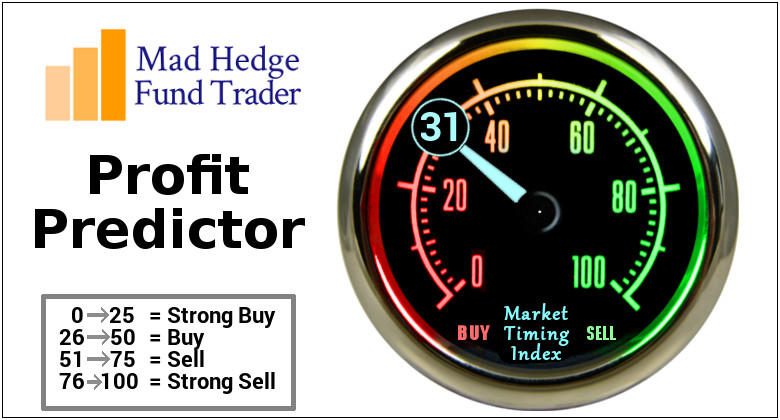
Mad Hedge Biotech and Healthcare Letter
June 7, 2022
Fiat Lux
Featured Trade:
(A LOW-KEY BIOTECH SET FOR A BULL RUN)
(REGN), (BAYG), (NVS), (RHHBY), (SNY), (ABBV), (PFE), (INCY), (MRK)

Biotechnology stocks have been sliding for months now, but scientific advancements are not slowing down.
The public’s focus on messenger RNA and gene editing may have dwindled, but the fact remains that more and more patients are benefiting from the discoveries.
More importantly, new treatments are well on their way to clinical trials.
That’s why I think Regeneron (REGN) could easily be one of the big winners in the coming years.
Despite the economic slowdown, Regeneron shares are doing okay. They have actually practically doubled since the start of 2020, when the biotech was thrust under the spotlight for its anti-COVID antibody cocktail, REGEN-COV.
Its popularity heightened when then-president Donald Trump used its treatment.
While the demand for REGEN-COV has since declined, the drug still raked in $7.5 billion in sales in 2021.
However, that would most likely not be the trend since it was proven to be not as effective against the newer strains. In addition, the FDA significantly limited the situations in which the antibody cocktail can be used.
For the foreseeable future, Regeneron shareholders’ earnings are primarily dependent on macular degeneration treatment Eylea and asthma and dermatitis drug Dupixent.
For Eylea, which Regeneron shares with Bayer (BAYG) outside the US, sales grew by 19% in 2021 to record $9.4 billion.
A vital issue Eylea faces is its expiring US patent by mid-2023, which will probably lead to more aggressive biosimilar competition as early as 2024.
Aside from that, more and more rivals are emerging, such as Beovu from Novartis (NVS) and Vabysmo from Roche (RHHBY).
Luckily for Regeneron, Beovu hasn’t gained traction due to safety issues, while Vabysmo is still struggling to establish itself as a viable alternative.
Thanks to its entrenched position as an undisputed market leader, Eylea sales will continue to be a top-selling treatment.
While things are still going well for Eylea, Regeneron has been proactive in establishing Dupixent as another key growth driver.
Dupixent, which was co-developed with Sanofi (SNY), showed off an impressive 51% jump in sales last year to rake in $6.2 billion—and this isn’t the peak yet.
Dupixent is estimated to reach over $14 billion in sales in the following years due to expanded markets.
Sales of this newer drug have caught up with Eylea’s in the past years.
In fact, Dupixent is projected to overtake Eylea sales by 2024, with the figure almost doubling by 2025 compared to the 2021 revenue.
In terms of competition in the atopic dermatitis sector, Dupixent is challenged by Rinvoq from AbbVie (ABBV), Cibinqo from Pfizer (PFE), and Opzelura from Incyte (INCY).
Nonetheless, Dupixent still looks well-positioned to expand into current and new indications in the following years and be able to fight off competitors.
It is critical for any biotechnology and healthcare business to maintain a solid pipeline to respond to upcoming patent losses and the rise of generic competition.
In this aspect, Regeneron has been performing excellently.
It has several treatments queued that complement the existing blockbusters, Eylea and Dupixent, and bolster the long-term growth prospects.
A good example is the company’s experimental treatment Aflibercept, which is slated to release Phase 3 results in the third or fourth quarter of 2022.
If this succeeds, it can enhance and strengthen Eylea’s efficacy, allowing Regeneron to retain its dominant position in the retinal market.
The company is also working on getting the green light for seven new indications on Dupixent-related treatments, which would be out by late 2022 and early 2023.
Another area under Regeneron’s radar is oncology.
While it’s cancer portfolio isn’t likely to become a significant growth driver anytime soon, there’s definitely potential here—and the potential comes in the form of in-house combos with Libtayo.
Libtayo, a cancer checkpoint inhibitor, is the most significant drug candidate in Regeneron’s oncology pipeline today.
Although it’s a latecomer to the field, Regeneron has become one of the frontrunners in the skin cancer segment with the approval of its cutaneous squamous cell carcinoma indication and the addition of the basal cell carcinoma label.
However, those are relatively minor markets. In terms of infiltrating a major market, Libtayo’s first venture is into the lung cancer sector.
But, this could be challenging since Merck’s (MRK) Keytruda has a firm hold of this market.
Still, Libtayo has the potential to achieve blockbuster status—a goal that Regeneron looks to be aggressively pursuing.
Aside from skin and lung cancer treatments, Regeneron has been developing Libtayo-based candidates for prostate cancer treatment REGN5678 and ovarian cancer therapy REGN4018. It is also working on another lung cancer treatment, REGN5093, to hopefully bolster its foothold in this lucrative market.
Needless to say, approval of these cancer treatments would be an incredible game-changer not only for cancer patients but also for Regeneron.
Overall, Regeneron is an outstanding biotechnology company and investment option. The success of its blockbuster treatments will offer a strong foundation for the company’s future growth.
If you add the more than 30 pipeline candidates of Regeneron in the mix, then it’s easy to see that a bull run might just be on the horizon for this stock.
While regulatory hurdles and emerging competitors would present challenges, it’s clear that Regeneron has these issues under control.
Moreover, the company’s pipeline has clearly shown that it’s ready to meet the challenges head-on. Hence, it would be advisable to buy the dip.
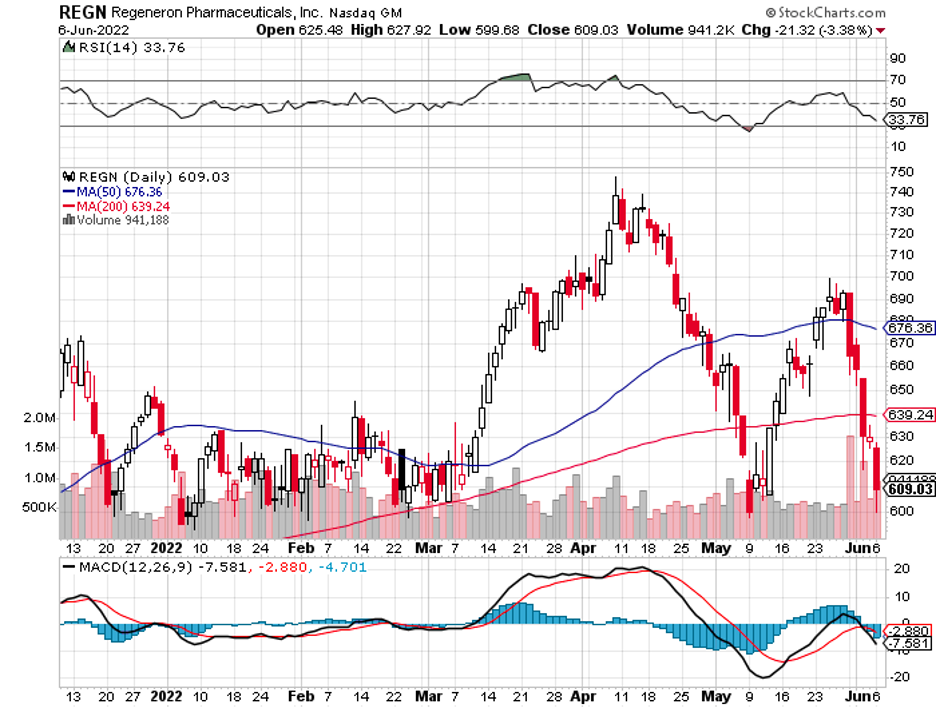
Mad Hedge Biotech and Healthcare Letter
May 19, 2022
Fiat Lux
Featured Trade:
(A RELIABLE STOCK THAT CAN WITHSTAND ANY GLOBAL SHOCKWAVE)
(JNJ), (PFE), (VTRS), (MRK), (OGN), (ABBV), (ABT), (NVO)
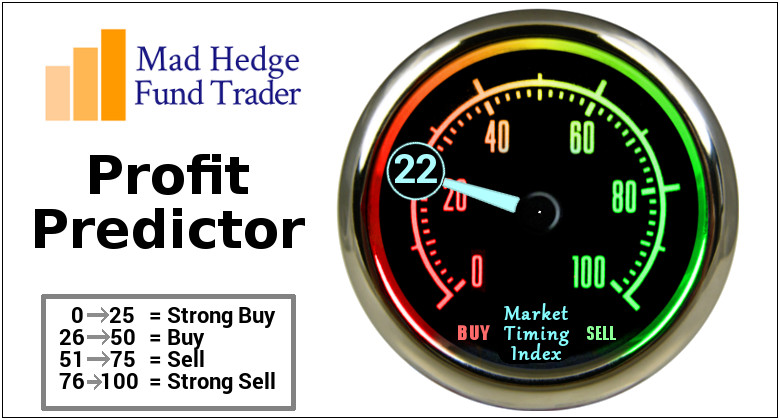
Investing is a long-term bet that requires patience and a strong risk appetite to enjoy eventual big wins.
In a world filled with uncertainties and gambles in the ever-evolving stock market trends, risk-averse investors are on the lookout for secure and stable options.
After all, who wouldn’t want to invest their hard-earned cash in a stock that can survive even the most intense macroeconomic shocks?
The name that easily fits these criteria in the biotechnology and healthcare sector is Johnson & Johnson (JNJ).
Reviewing JNJ’s five-year price movements from 2017 until 2022, a steady bullish trend of roughly 46% growth can be seen.
This trend has continued amid the slowdowns, with the stock delivering consistent growth and recovery despite serious dips.
In early 2020, when the COVID-19 outbreak wreaked havoc on the global economy, JNJ tanked along with other stocks. However, the company steadily showed signs of recovery mere weeks following the outbreak.
By 2021, JNJ managed to record a substantial increase of 11.4%. More importantly, it was able to sustain that trend throughout the year.
In March 2022, when the Ukraine-Russia crisis disrupted the economy, several businesses in the industry once again crashed due to supply chain and logistical issues. Amid these disruptions, JNJ still managed to stay on its growth path and develop contingencies to protect its assets.
Widely known as a global healthcare titan, JNJ holds a market capitalization that is hovering close to roughly half a trillion dollars.
As the parent company of the top-rated brands like Benadryl, Listerine, and Neutrogena, JNJ’s market operations are trifurcated into three main segments: MedTech, Pharmaceutical, and Consumer Health.
In November 2021, the company disclosed its plans to spin off its consumer arm into a separate publicly-traded company.
Similar to the move of Pfizer (PFE) with its Viatris (VTRS) spinoff and Merck (MRK) with Organon (OGN), JNJ’s goal is to reclassify a number of its international OTC drugs from its Consumer Health branch to form part of the pipeline of the new spinoff company.
Needless to say, the company’s notably diversified portfolio provides its with a competitive advantage in this highly volatile market.
Meanwhile, its other two segments are also contributing to JNJ’s growth. Its Pharmaceutical branch recorded a 6.3% increase in revenue in the first quarter of 2022, while its MedTech segment grew by 5.9%.
In total, JNJ’s sales for the first quarter of 2022 rose by 5% to reach $23.4 billion. This also boosted the company’s earnings per share to $2.67.
Riding the momentum of its strong first-quarter showing this year, JNJ once again demonstrated why it is hailed as a Dividend King.
The company hiked its quarterly dividend by 6.6% to $1.13 per share, making this the 60th consecutive annual dividend increase.
Considering that the company has been paying out dividends since 1963, this latest increase is indicative of how safe JNJ is for investors who want to multiply their cash while earning a regular income via dividends.
Moreover, JNJ is a clear frontrunner in the healthcare world and continues to work on innovative solutions to keep it ahead of its competitors.
Taking a closer look at the broader competitive field of healthcare industry players that are considered similarly sized, like AbbVie (ABBV), Abbott Laboratories (ABT), and Novo Nordisk (NVO), JNJ has the most significant market capitalization.
In this aspect, the company is the largest among its direct rivals. Therefore, it essentially reinforces its capacity to raise finances.
Given its perpetual bullish climb since its trade initiation back in 1982 and its addition to the Dow Jones Industrial Average (DJI), JNJ stock has been long known to hold strong credibility.
Actually, JNJ and Microsoft (MSFT) are the only two American companies with an AAA credit rating, a grade above the United States government itself.
This means that JNJ has such a strong sense of certainty in debt repayment that it holds a lower probability of default than the US government—an entity allowed by law to print money.
Overall, JNJ has proven to be an excellent option for risk-averse investors searching for growth and profitability.
It has strong financial fundamentals and a commanding market position, making it a highly stable and secure investment.
Moreover, its diverse portfolio minimizes the risk exposure of the company. All these make JNJ a great buy. Hence, it would be a wise move to buy the dip.
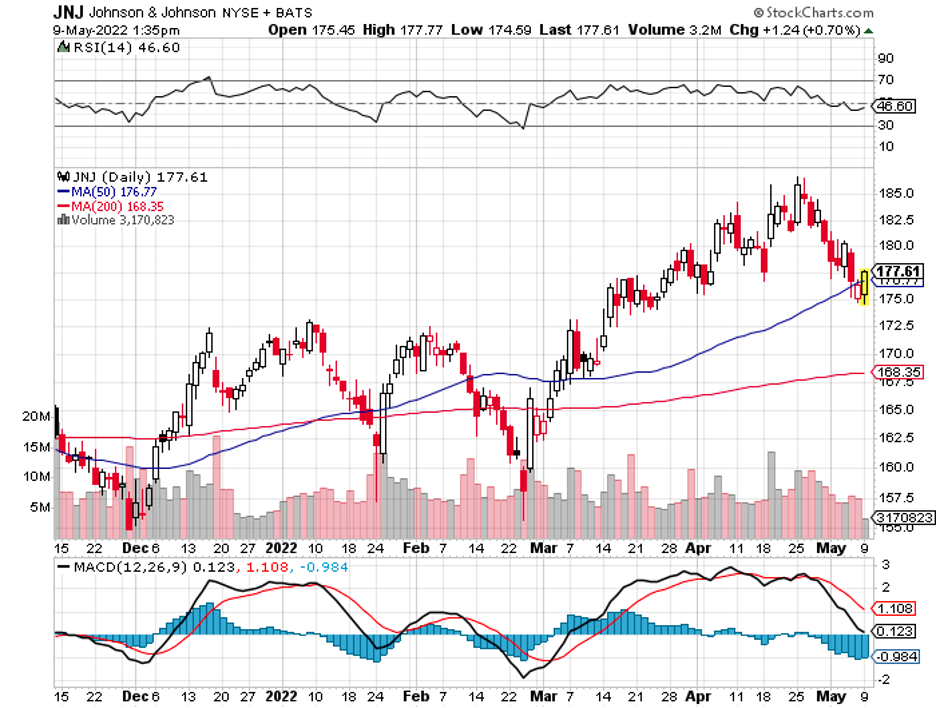
Mad Hedge Biotech and Healthcare Letter
April 26, 2022
Fiat Lux
Featured Trade:
(SLOW AND STEADY WINS THE RACE)
(GILD), (BMY), (GILD), (MRK)
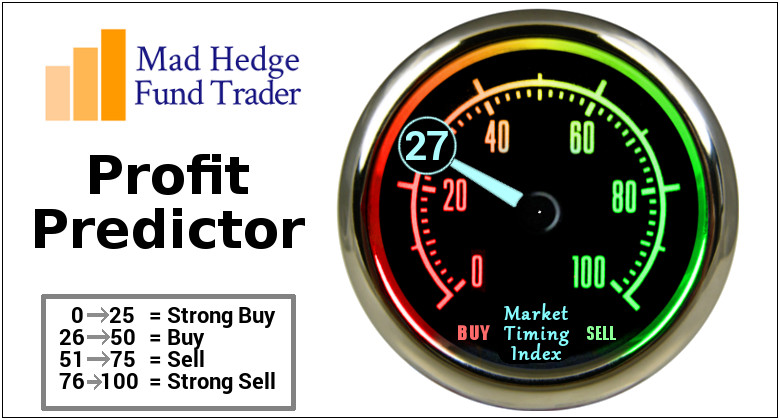
Gilead Sciences (GILD) has been primarily ignored by investors who have focused more on other biotechnology and healthcare companies, particularly those that made a significant impact in the fight against COVID-19.
Reviewing the recent performance of its share price, Gilead can be best described as the ugly duckling among the Big Pharma companies in the US.
The lack of significant catalysts in the past months makes Gilead incomparable to the big movers with diversified portfolios in the space, such as Bristol Myers Squib (BMY), Johnson & Johnson (JNJ), and even Merck (MRK).
Nonetheless, I consider Gilead one of the most undervalued biopharmaceutical names in the sector.
Founded in 1987, Gilead started as a biopharma geared toward researching and developing drugs for severe and rare diseases.
Fast forward to today, it now has roughly $80.57 billion in market capitalization.
It is also widely considered the undisputed market leader for HIV treatment, with much of its revenue coming from this segment.
In its 2021 annual report, $16.3 billion of Gilead’s $27.3 billion entire revenue came from its HIV program. That’s approximately 59.7% of the total.
Globally, the market for HIV treatments reached a total of $30.46 billion in 2021.
This translates Gilead’s market share to more than 53% worldwide, with the company producing 6 of the top 10 leading products targeting the disease.
The global HIV market is expected to reflect long-term growth and is projected to reach $45.5 billion by 2028.
If Gilead sustains its market share of over 50%, it can comfortably rake in $23 billion in annual revenue from this segment alone.
While being a leader in a sustainable and stable market is definitely a good thing, Gilead has been working on diversifying its portfolio to avoid becoming too dependent on a single program.
Indicative of this plan was its efforts in 2020 when Gilead went through with 11 acquisitions and partnerships focused on oncology.
This move dramatically boosted its pipeline by 50%, with 10 drugs already queued in Phase 3 clinical trials for cancer treatments.
More importantly, this expansion to the oncology segment has also generated revenue with promising growth figures.
In fact, Gilead’s decision to focus on T-Cell therapies appears to be paying off as the company developed groundbreaking treatments with impressive efficacy rates.
In April 2022, Yescarta received the FDA's green light as the first ever CAR-T cell therapy targeting large b-cell lymphoma (LBCL).
This is an exciting update, with Gilead disclosing that 40.5% of patients who received just a single infusion of Yescarta experienced no disease progression or need for any additional cancer treatment for two years.
This is a 2.5x improvement over the current standard of care rate at 16.3%.
Yescarta’s success also serves as a promising sign for another oncology treatment, Tecartus, which targets mantle cell lymphoma (MCL).
Yescarta and Tecartus are indubitably great lucrative revenue streams in sales growth and market sizes.
The MCL market is estimated to be roughly $7 billion this year, with an annual growth rate of 7% through 2027.
In 2021, Tecartus generated $276 million in sales, accounting for 2.5% of the market share.
While that may not be an eye-popping figure, the number is actually up by 68% year-over-year, which means Gilead is slowly absorbing more and more of the MCL market share.
Notably, MCL is also quite rare, affecting only 0.5 individuals out of 100,000.
Given the figures, though, Tecartus is still well on its way to contributing more than $1 billion in sales in the following years.
Meanwhile, Yescarta offers a more promising growth story since the LBCL segment is practically 14x the size of the MCL space, as it affects 7 out of 100,000 people annually.
In 2022, the LBCL market is projected to reach $4.3 billion, with a CAGR growth rate of 15% from this year to 2030. In 2021, Yescarta raked in $695 million in sales, showing off a 41% increase year-over-year and taking over roughly 16.2% of the market share.
Given the present growth rates of both Yescarta and the LBCL market, it’s feasible for Gilead to capture at least 50% of the market by 2027.
Another notable oncology asset is Trodelvy, a metastatic triple-negative breast cancer (MTNBC) and metastatic urothelial cancer (MUC) treatment.
Like Yescarta and Tecartus, this is another potential blockbuster.
For 2022, the MTNBC market is estimated to be approximately $606 million, while the MUC market is at $1.189 billion. The growth rates for these are 4.7% and 17.9%, respectively.
In 2021, Trodelvy captured 21% of the market share with $380 million in revenue.
However, what’s more promising is that this figure indicates an 84% increase year-over-year, which shows the massive potential of Trodelvy and its ability to become a billion-dollar revenue stream in under two years quickly.
Although Gilead still has a number of therapies and drugs in the works, Tecartus, Yescarta, and Trodelvy are the frontrunners in becoming blockbusters within the next five years.
This should give the company some time to develop more treatments to boost and diversify its portfolio.
The biopharma industry is highly competitive, but Gilead appears to be healthy and attractive.
While the company continues to focus on growing its HIV segment, what makes it promising these days is expanding its oncology program, particularly its revolutionary T-Cell therapies.
Admittedly, Gilead is not as exciting as the other names on the Big Pharma list. However, its slow and steady approach to dominating massive and lucrative markets looks like an excellent winning strategy.
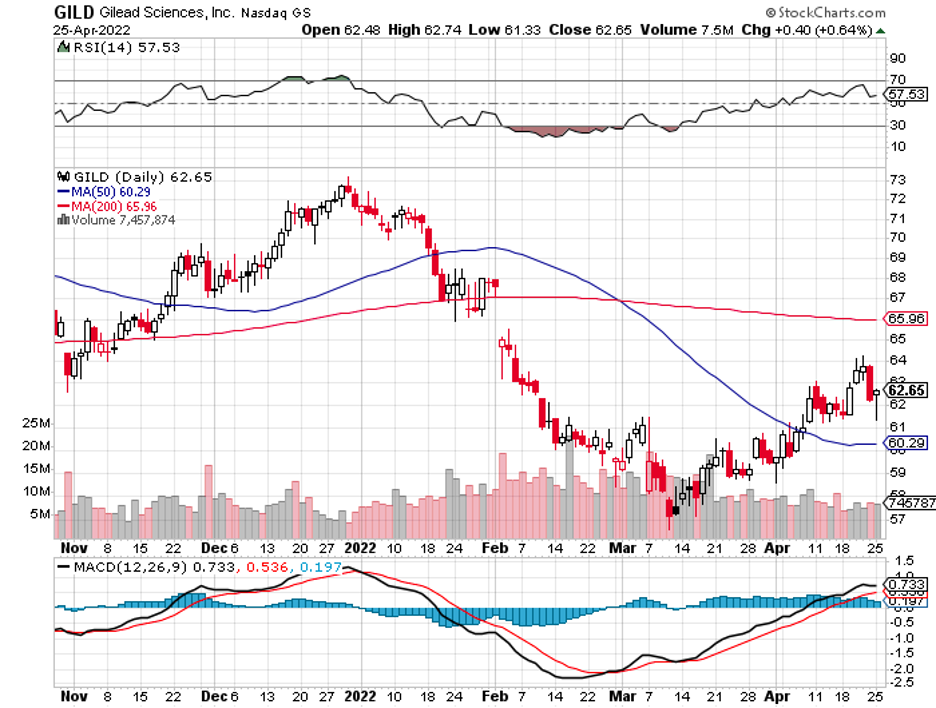
Mad Hedge Biotech and Healthcare Letter
April 21, 2022
Fiat Lux
Featured Trade:
LET’S GET READY TO RUMBLE)
(MRNA), (PFE), (BNTX), (AZN), (ABBV), (MRK), (BMY), (TAK), (GILD),
(SNY), (ALNY), (NVS), (REGN), (IONS), (GSK), (BIIB), (CRSP)
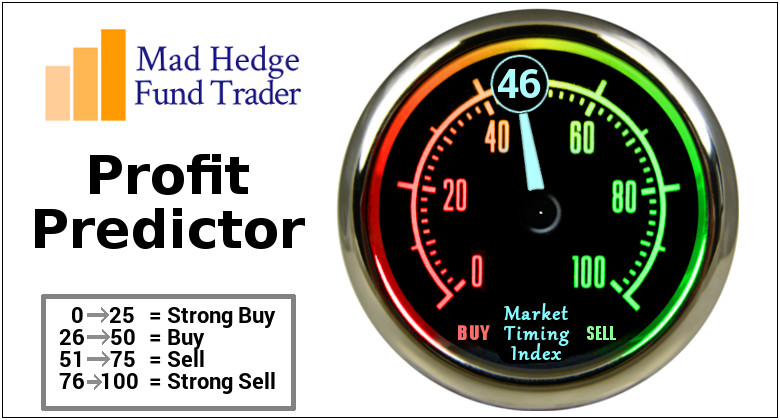
As we gradually reach the pinnacle of biotechnology formation, a war is brewing in the life sciences world.
This can be one of the most exciting times for medical innovations for patients. Meanwhile, investors can be picky when picking where to put their money.
Even up-and-coming scientists can seize the opportunities to lay the groundwork for their own dream organizations.
At the same time, those aspiring to climb the corporate ladder have better chances at becoming CEO without the need to slog through the biopharma sector and scramble for whatever opening is available.
However, as more and more companies launch practically every day, claiming to offer groundbreaking and revolutionary breakthroughs, it’s critical to keep in mind that not all biotechs will succeed.
Actually, the number of biotech companies has been steadily rising since 2015.
In that year, 177 firms were formed, with biotech birth rates breaching the 200-per-annum mark by 2017 and 2018.
Seeing as many more have emerged even during the pandemic, it looks like the biotech world won’t be slowing down anytime soon.
Even funding hasn’t been deterred by economic downturns.
From 2015 to 2018, the total funding for biotech companies averaged between $68.6 million to roughly $90.2 million.
After a bustling, record-breaking 2020, the bar leading to 2021 was expectedly high.
Surprisingly, 2021 blew those figures out of the water as private investors opted to raise the bar even higher.
It’s the type of climb that’s truly hard to believe.
Biotechs raised over $22 billion in private funds in 2020 following a sluggish 2019. In 2021, that figure rose to $28.5 billion.
The top earner in these funding rounds last year was China’s Abogen, which took $1 billion in private investors’ money across two rounds.
Abogen is an mRNA-centered firm that’s currently working on a COVID-19 vaccine.
What makes its product different and possibly better than Moderna (MRNA), Pfizer (PFE), BioNTech (BNTX), and AstraZeneca (AZN) is that it would be thermostable. That is, it could be used in areas without access to refrigeration.
Another big winner in 2021 is Massachusetts-based biotech ElevateBio, which aims to be a one-stop shop for cell and gene therapies.
The idea is to develop a technology that fuses its gene-editing platform, cell engineering structure, and manufacturing warehouse into one system to ease and accelerate the drug development process.
Although not entirely the same, this plan has similarities with the strategies of Big Pharma names like AbbVie (ABBV) and Merck (MRK).
Amid the growing number of biotechs, a key challenge is how to stand out among companies that target the same disease areas. This kind of competition could hamper innovation.
The clearest indicator of success would be receiving approval and being able to launch the products commercially.
Ultimately, the goals are to offer safe and effective treatments and provide value to their shareholders.
Unfortunately, the reality is only a handful of startups do make it all the way to the top.
The more feasible scenario is that bigger businesses would acquire these companies—and that seems to be the case these days.
Alongside the booming biotech formation rate are the increasingly aggressive biotech buyout deals.
We’ve seen this before.
It started in 2019, with Bristol Myers Squibb (BMY) buying Celgene, followed by AbbVie splurging on Allergan and Takeda (TAK) merging with Shire.
In 2020, AstraZeneca bought biotech superstar Alexion Pharmaceuticals while Gilead Sciences (GILD) snapped up Immunomedics.
Meanwhile, Sanofi (SNY) stacked its deck with the $3.2 billion acquisition of Translate Bio. As for Merck, this biopharma sneaked in a massive win with an $11.5 billion buyout of Acceleron.
For this year, several names have already been eyed by Big Pharmas.
There’s Alynlam Pharmaceuticals (ALNY), an RNA-centered company, which seems to be the target of both Novartis (NVS) and Regeneron (REGN).
Another RNA-focused company, Ionis Pharmaceuticals (IONS), appears to be a key target as well, with the likes of GlaxoSmithKline (GSK), Bayer, and even Biogen (BIIB) waiting for an opportunity to pounce.
After all, acquisitions form an integral lifeline of the biotech world. Huge businesses with the resources swoop up promising buyout candidates to bolster their own pipelines.
However, M&A isn’t the only option for biotechs. There’s also the path where they can seek companies with similar focus and consolidate to become larger and more competitive entities.
This has been the expected plan for CRISPR Therapeutics (CRSP) for a long time. Hence, it is no surprise if other biotechs with their own groundbreaking technologies decide to follow the same route.
Overall, the biotech industry is booming amid its recent struggles with the market.
The faster growth rate of companies can be attributed to more investors seeing the industry's potential and, of course, better access to technology and scientific advancement.
Moreover, the world has become more interested in the biotech world and what the industry can offer due to the pandemic.
COVID-19 has shone a light on this sector following the quick and effective results of the vaccines and treatments.
That is, people have finally caught on to the idea that there is an incredible opportunity in biotech.
While a correction is to be expected at some point, the critical thing to bear in mind is that great ideas will always generate funding no matter what.
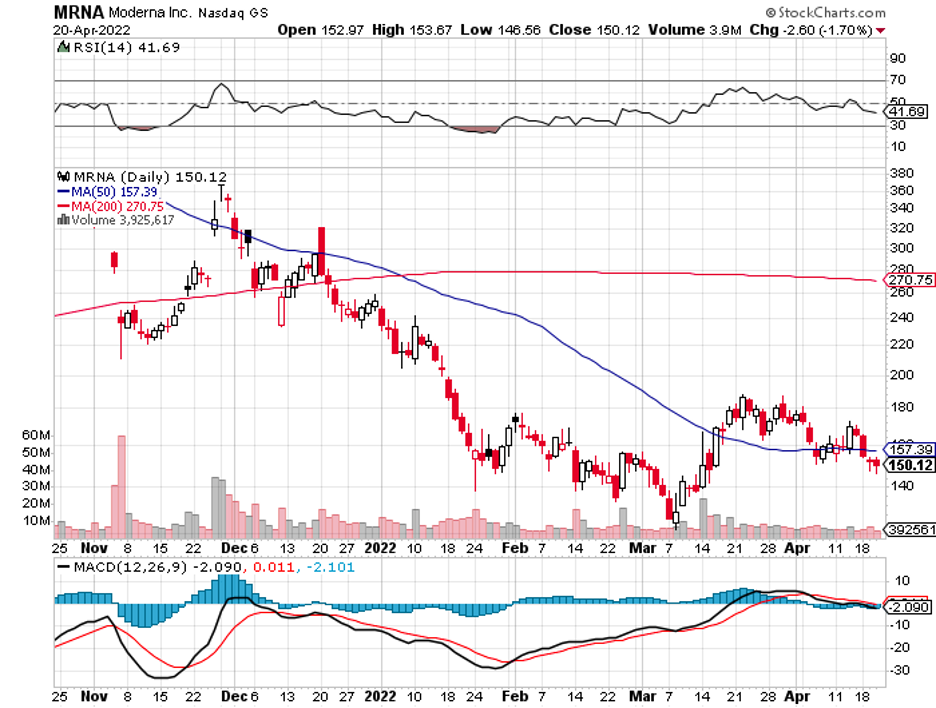

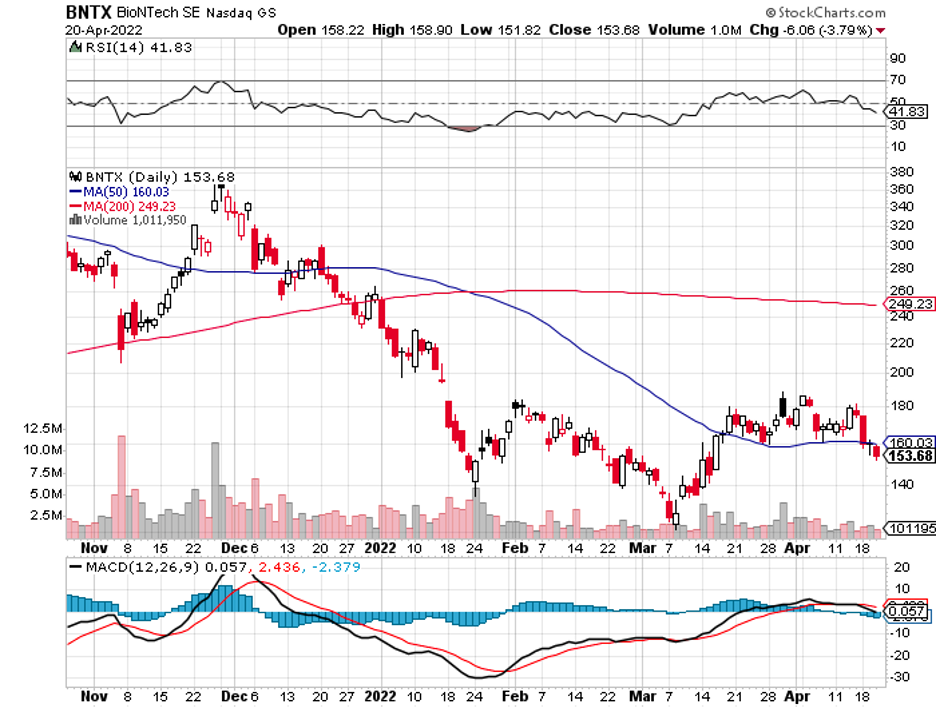
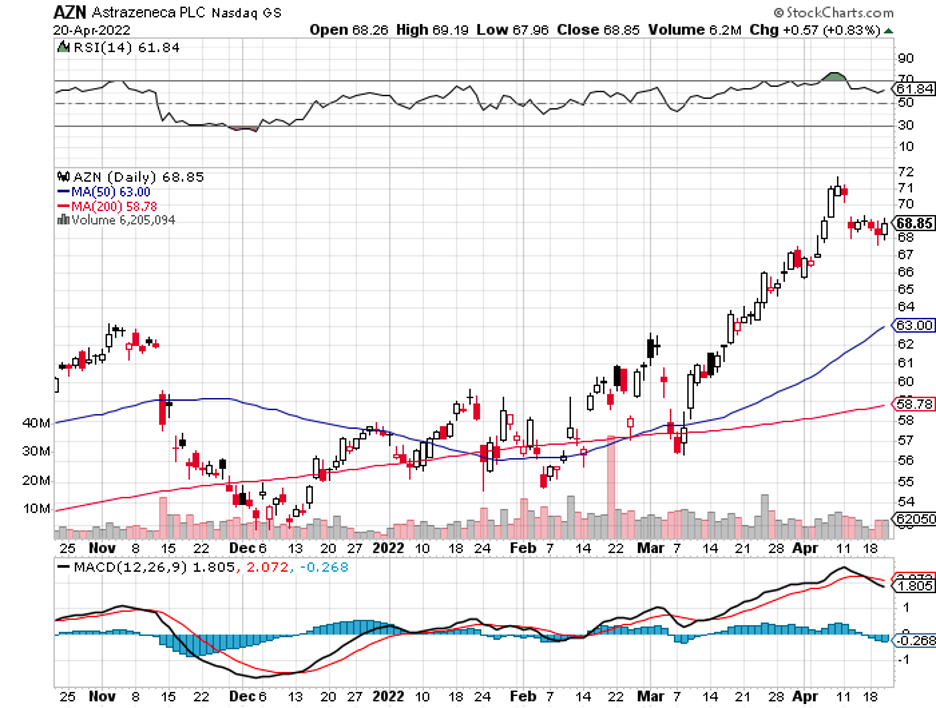
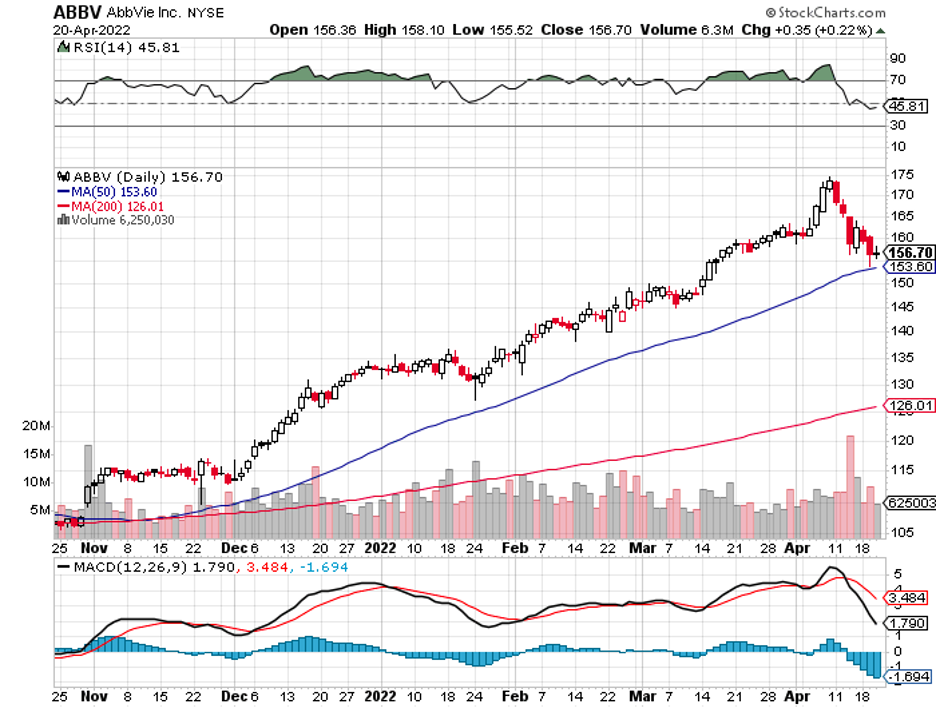
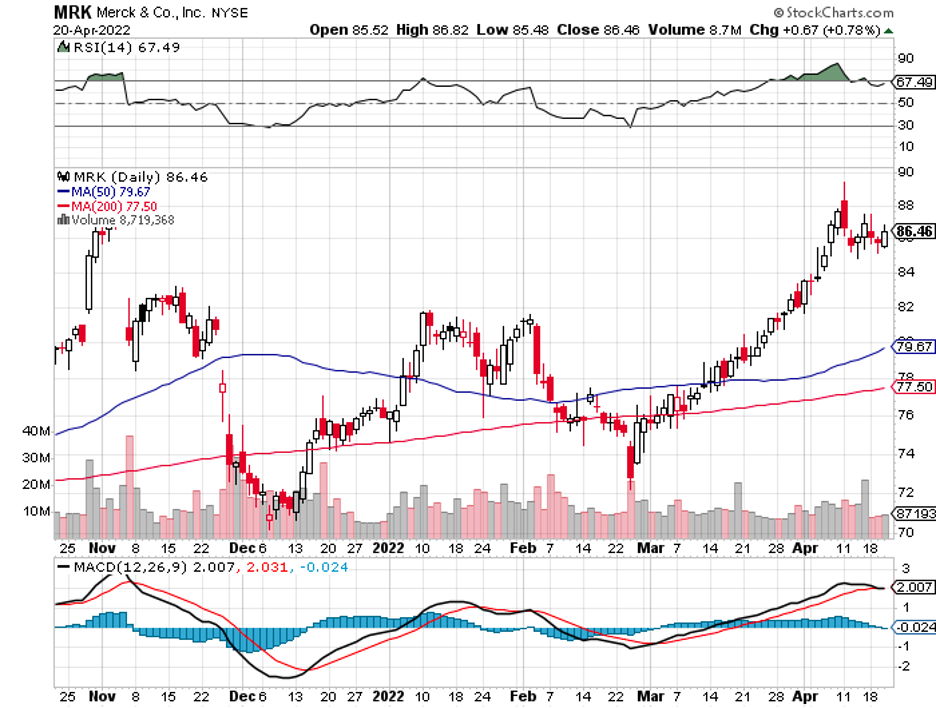
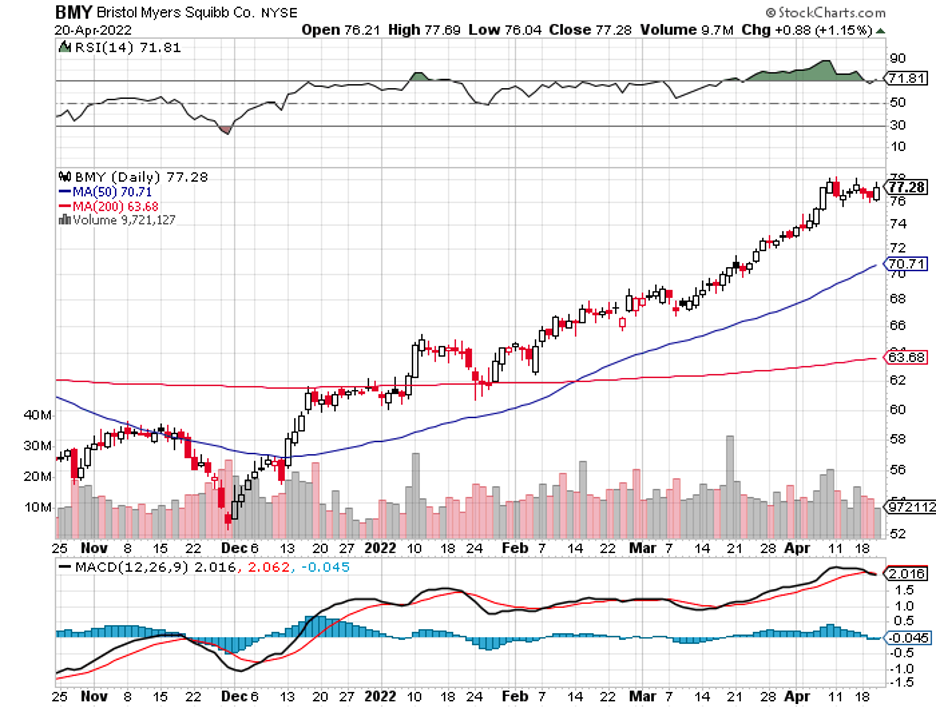
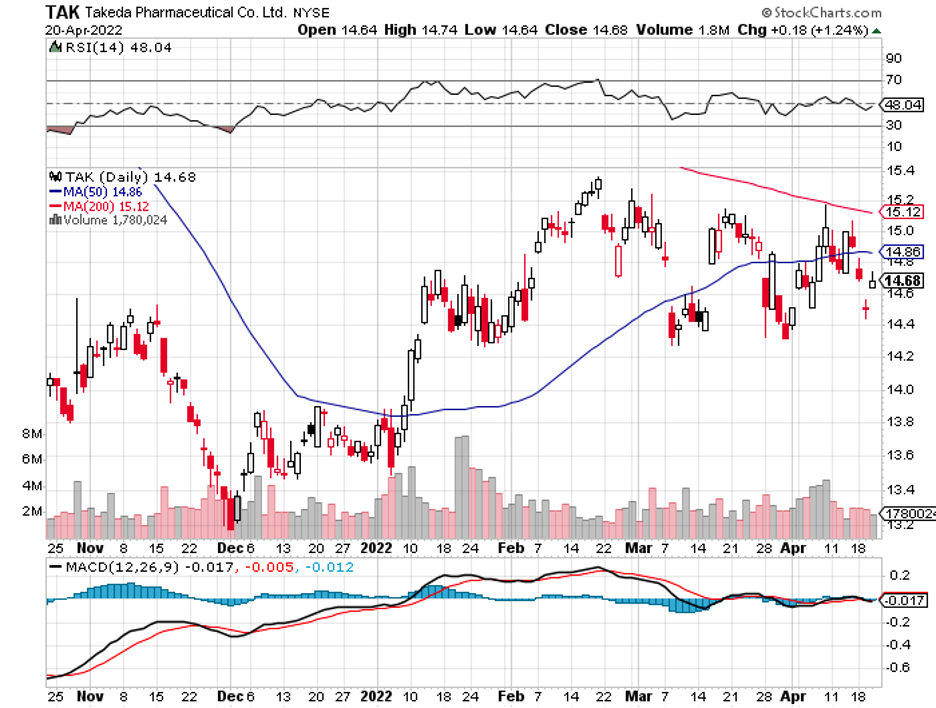
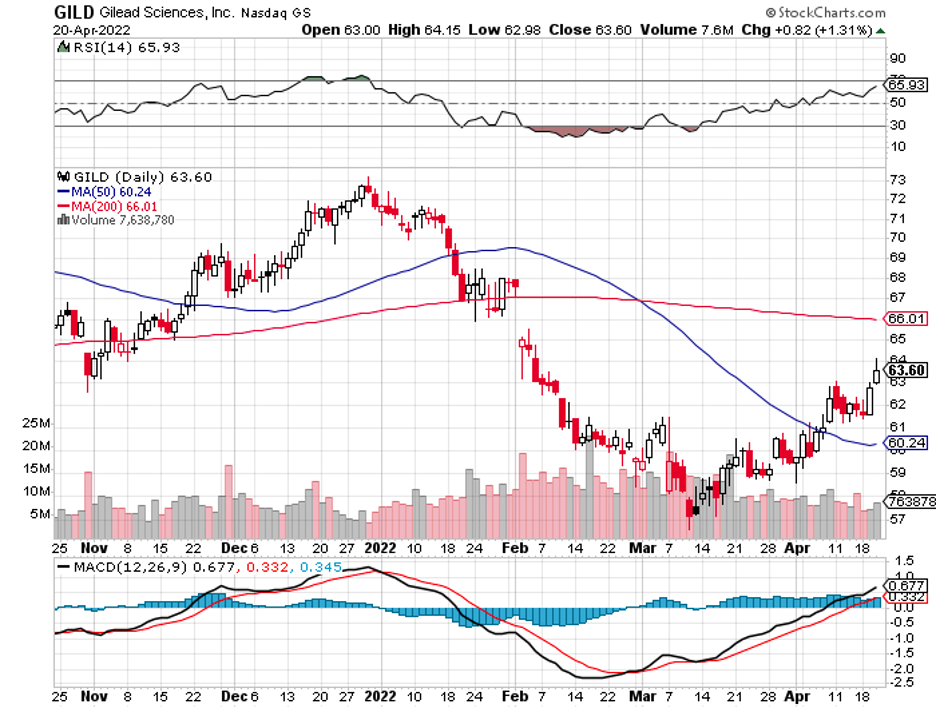
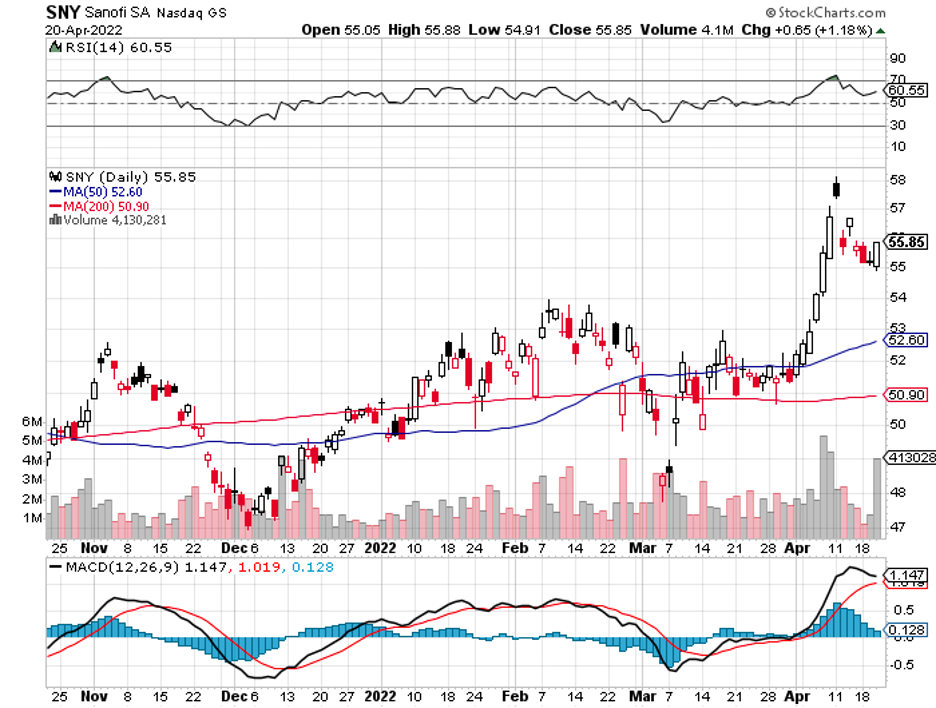
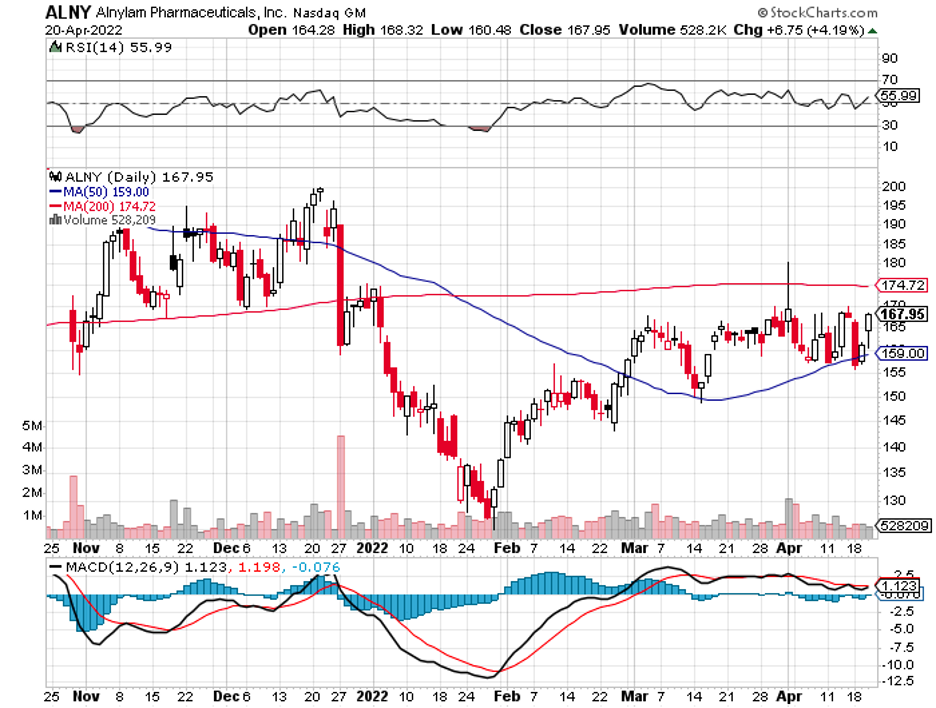

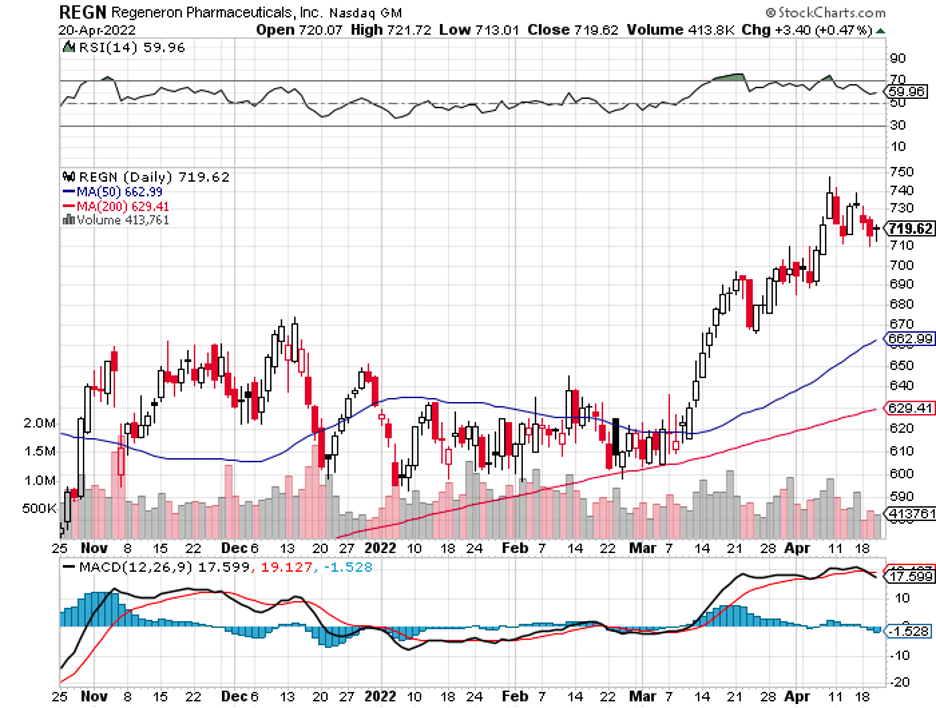
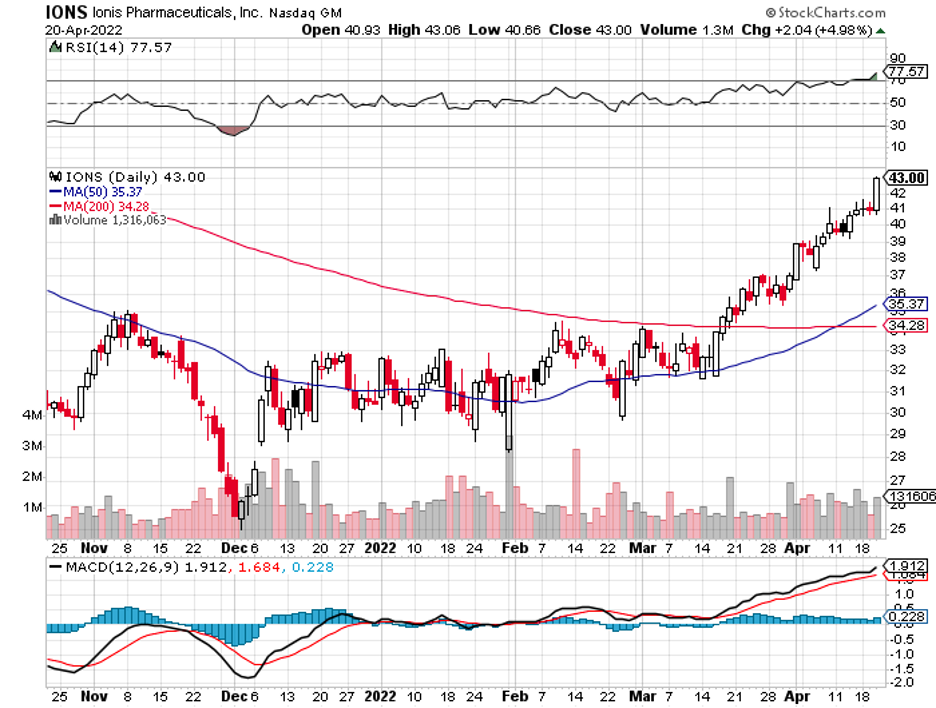
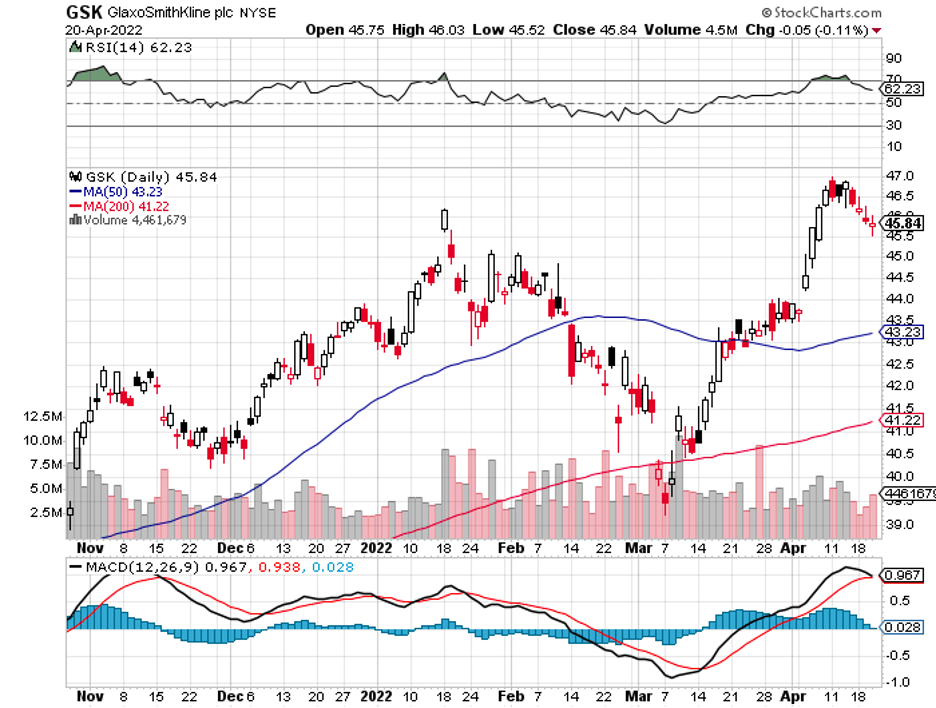
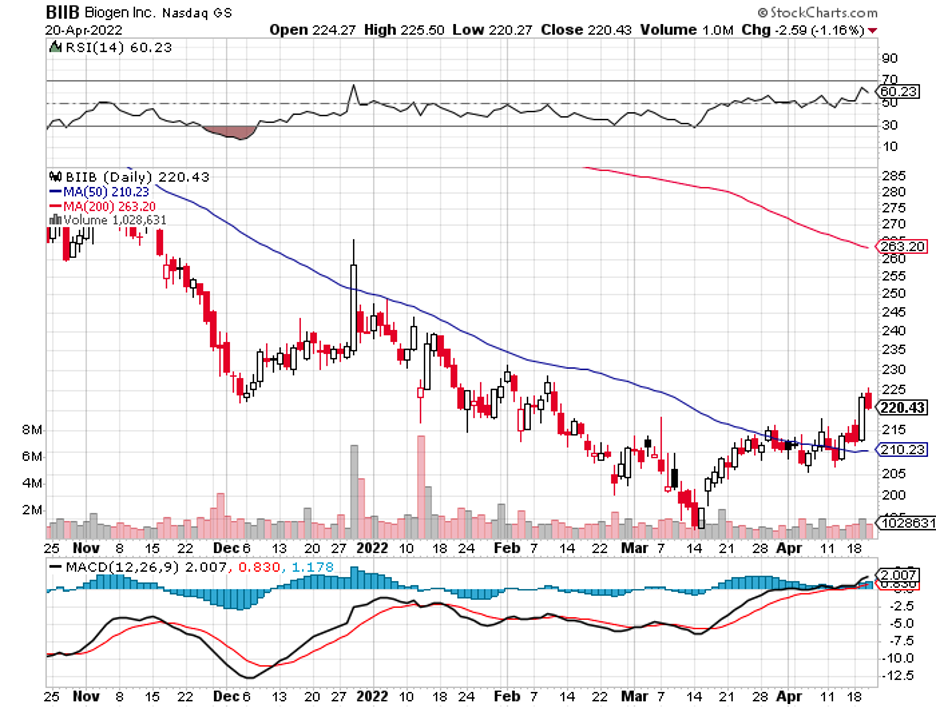
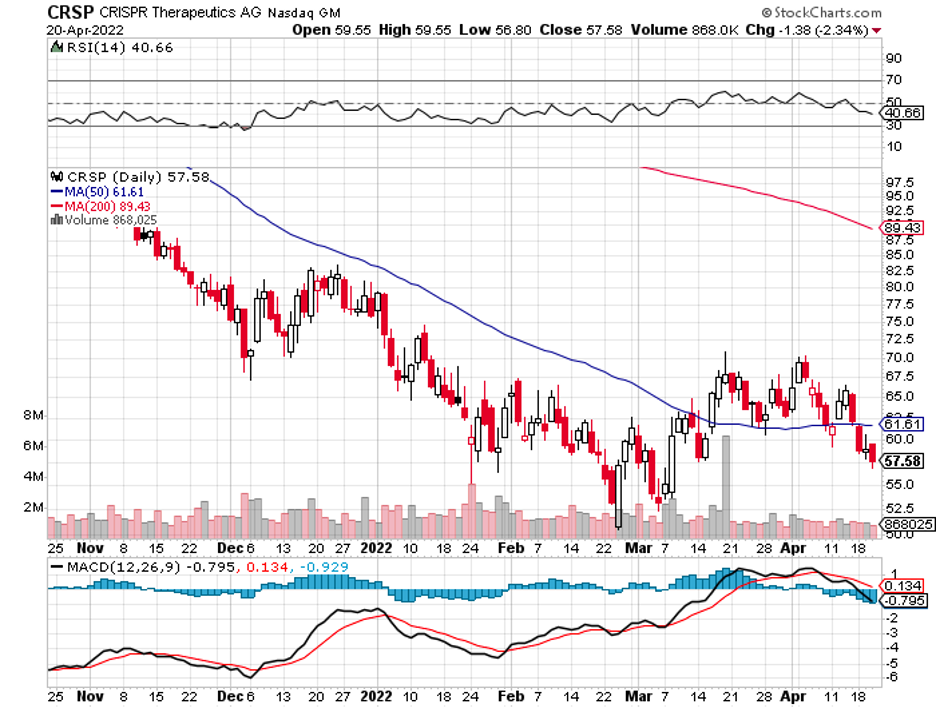
Mad Hedge Biotech and Healthcare Letter
April 14, 2022
Fiat Lux
Featured Trade:
(A BIOPHARMA STOCK BENT ON REDEMPTION)
(MRK), (BMY), (ABBV), (ORGN), (PFE), (VTRS), (MRNA), (BNTX), (CRSP), (VRTX), (BLUE), (BIIB)
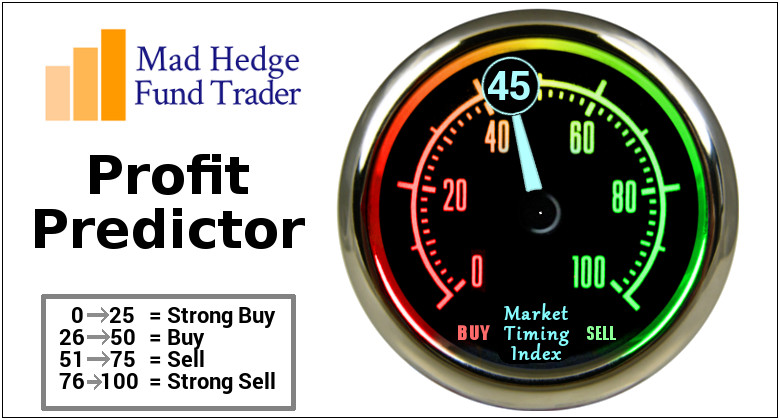
It looks like we’re about to bear witness to a redemption journey.
Once upon a time, Merck (MRK) was a major player in the cardiovascular sector. Over the years, it has gradually diminished to a minor league name.
However, Merck has plans to reverse this fortune and reclaim its dominance in the cardio market. To date, it has eight new drug approvals and a slew of expanded labels queued in the next couple of years.
This decision is evident in Merck’s move to outbid Bristol Myers Squibb (BMY) in the auction for Acceleron Pharma, shelling out a whopping $11.5 billion to boost its cardio pipeline considerably.
While the deal may seem like a massive risk, Merck is confident that this deal holds the potential to open up the path to single-product peak sales reaching $10 billion by the mid-2030s.
In fact, there’s no need to wait for long to see some solid proof of Merck’s multibillion-dollar bet, as Acceleron already has a candidate set to be put on display by the end of 2022 or early 2023.
This Acceleron acquisition forms part of the “New Merck” touted when the company welcomed a new CEO and came on the heels of the success of the leadership that brought the mega-blockbuster cancer drug Keytruda.
It also signifies Merck’s conscious efforts to ease their heavily criticized over-dependence on Keytruda.
While the drug will lose patent protection after 2028, Keytruda still holds a significant portion of Merck’s sales. The treatment accounted for roughly 35% of the company’s total revenues last year.
The patent loss of a significant moneymaker is a typical problem for virtually every Big Pharma company, with AbbVie (ABBV) and Bristol Myers Squibb coming to mind as the most recent examples.
The go-to solution to this is pursuing mega-money mergers: AbbVie acquired Allergan for $63 billion while Bristol splurged on Celgene at $74 billion.
This quickly bolsters the existing pipelines and portfolios of the companies and assuages the fear of investors over impending revenue losses.
Instead of following this pattern, Merck did the opposite in 2021.
The company decided to downsize and established a spinoff segment: Organon (ORGN). The idea is to offload its biosimilars and other legacy products to focus on its core strengths.
This is reminiscent of Pfizer’s (PFE) move to spin out its Upjohn unit and merge it with Mylan to form Viatris (VTRS).
This move looks to have worked well for Merck and Organon as it allowed the parent company to focus on its blockbuster brands.
For instance, Bridion recorded a 28% year-over-year rise in 2021 to reach $1.53 billion in sales, while ProQuad reported a 14% increase to hit $2.14 billion.
Meanwhile, Gardasil rose to an impressive 44% to contribute $5.7 billion.
Even Merck’s Animal Health sector grew by 18% to record $5.6 billion.
There’s also Keytruda, which is projected to become the highest-selling drug at $24.3 billion by 2026.
These are only some of the blockbuster products in Merck’s portfolio expected to continue increasing revenues this 2022.
In addition, the company expects at least $5 billion from its COVID-19 antiviral drug Molnupiravir.
Looking at the trajectory and growth of the pipeline and existing programs, Merck estimates an additional 17% increase in its year-on-year revenue in 2022 to reach $56.1 billion to $57.6 billion.
Despite the move to establish a spinoff unit, the Acceleron deal hints at the possibility that Merck might be shifting to an open checkbook strategy.
Considering how relentlessly it pursued the deal, there’s a chance that the company would be at the bargaining table for a while in search of ways to protect itself against the pending Keytruda patent loss.
Some contenders for a potentially splashy offer from Merck are Moderna (MRNA) and BioNTech (BNTX), which could bolster the bigger company’s mRNA pipeline.
It can also splurge on gene therapy experts by targeting CRISPR Therapeutics (CRSP) and even Vertex (VRTX).
However, given bluebird bio’s (BLUE) flailing performance as of late, this small biotech could very well be a contender for a bargain deal.
Speaking of discounted stocks, Biogen (BIIB) is also reportedly under consideration simply because of its deeply discounted price following its disastrous Alzheimer’s disease program.
Whatever move it makes, one thing is sure: Merck, with its $208 billion market capitalization, is in a healthy and stable place financially.
More importantly, it has an excellent product portfolio and an exciting pipeline.
It has shown remarkable growth in the past years and impressive efforts to secure a great future, making it a solid stock to buy and hold for a long time.
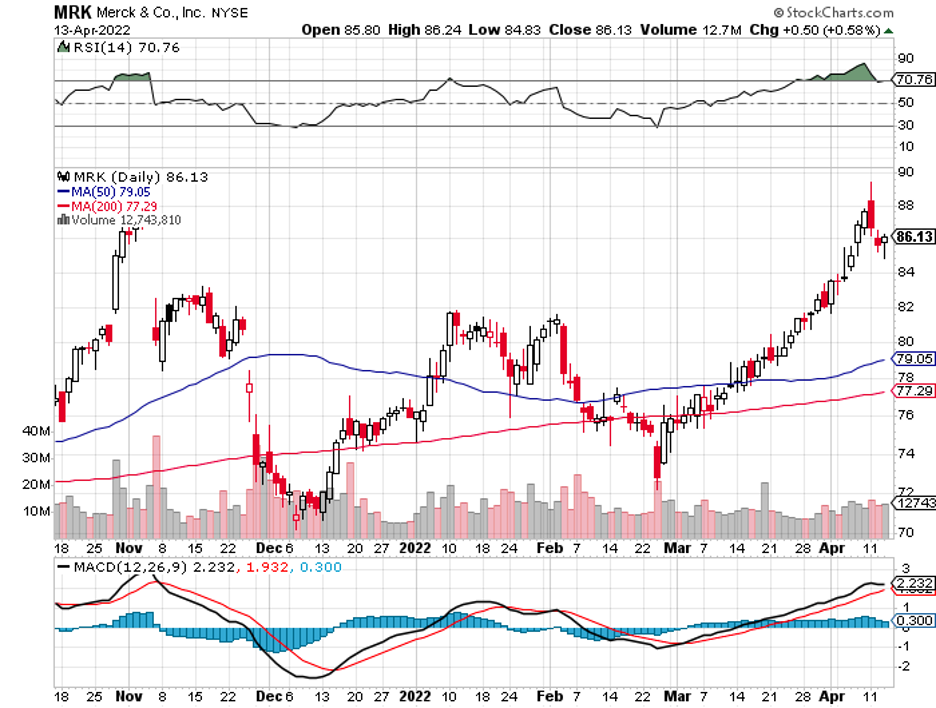
Legal Disclaimer
There is a very high degree of risk involved in trading. Past results are not indicative of future returns. MadHedgeFundTrader.com and all individuals affiliated with this site assume no responsibilities for your trading and investment results. The indicators, strategies, columns, articles and all other features are for educational purposes only and should not be construed as investment advice. Information for futures trading observations are obtained from sources believed to be reliable, but we do not warrant its completeness or accuracy, or warrant any results from the use of the information. Your use of the trading observations is entirely at your own risk and it is your sole responsibility to evaluate the accuracy, completeness and usefulness of the information. You must assess the risk of any trade with your broker and make your own independent decisions regarding any securities mentioned herein. Affiliates of MadHedgeFundTrader.com may have a position or effect transactions in the securities described herein (or options thereon) and/or otherwise employ trading strategies that may be consistent or inconsistent with the provided strategies.
This site uses cookies. By continuing to browse the site, you are agreeing to our use of cookies.
OKLearn moreWe may request cookies to be set on your device. We use cookies to let us know when you visit our websites, how you interact with us, to enrich your user experience, and to customize your relationship with our website.
Click on the different category headings to find out more. You can also change some of your preferences. Note that blocking some types of cookies may impact your experience on our websites and the services we are able to offer.
These cookies are strictly necessary to provide you with services available through our website and to use some of its features.
Because these cookies are strictly necessary to deliver the website, refuseing them will have impact how our site functions. You always can block or delete cookies by changing your browser settings and force blocking all cookies on this website. But this will always prompt you to accept/refuse cookies when revisiting our site.
We fully respect if you want to refuse cookies but to avoid asking you again and again kindly allow us to store a cookie for that. You are free to opt out any time or opt in for other cookies to get a better experience. If you refuse cookies we will remove all set cookies in our domain.
We provide you with a list of stored cookies on your computer in our domain so you can check what we stored. Due to security reasons we are not able to show or modify cookies from other domains. You can check these in your browser security settings.
These cookies collect information that is used either in aggregate form to help us understand how our website is being used or how effective our marketing campaigns are, or to help us customize our website and application for you in order to enhance your experience.
If you do not want that we track your visist to our site you can disable tracking in your browser here:
We also use different external services like Google Webfonts, Google Maps, and external Video providers. Since these providers may collect personal data like your IP address we allow you to block them here. Please be aware that this might heavily reduce the functionality and appearance of our site. Changes will take effect once you reload the page.
Google Webfont Settings:
Google Map Settings:
Vimeo and Youtube video embeds:
